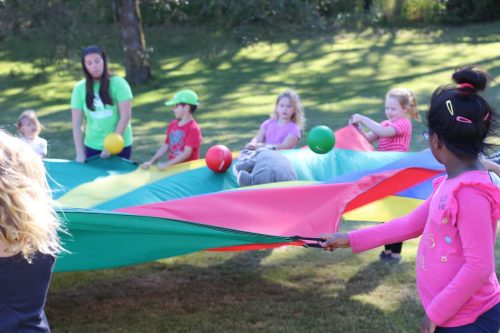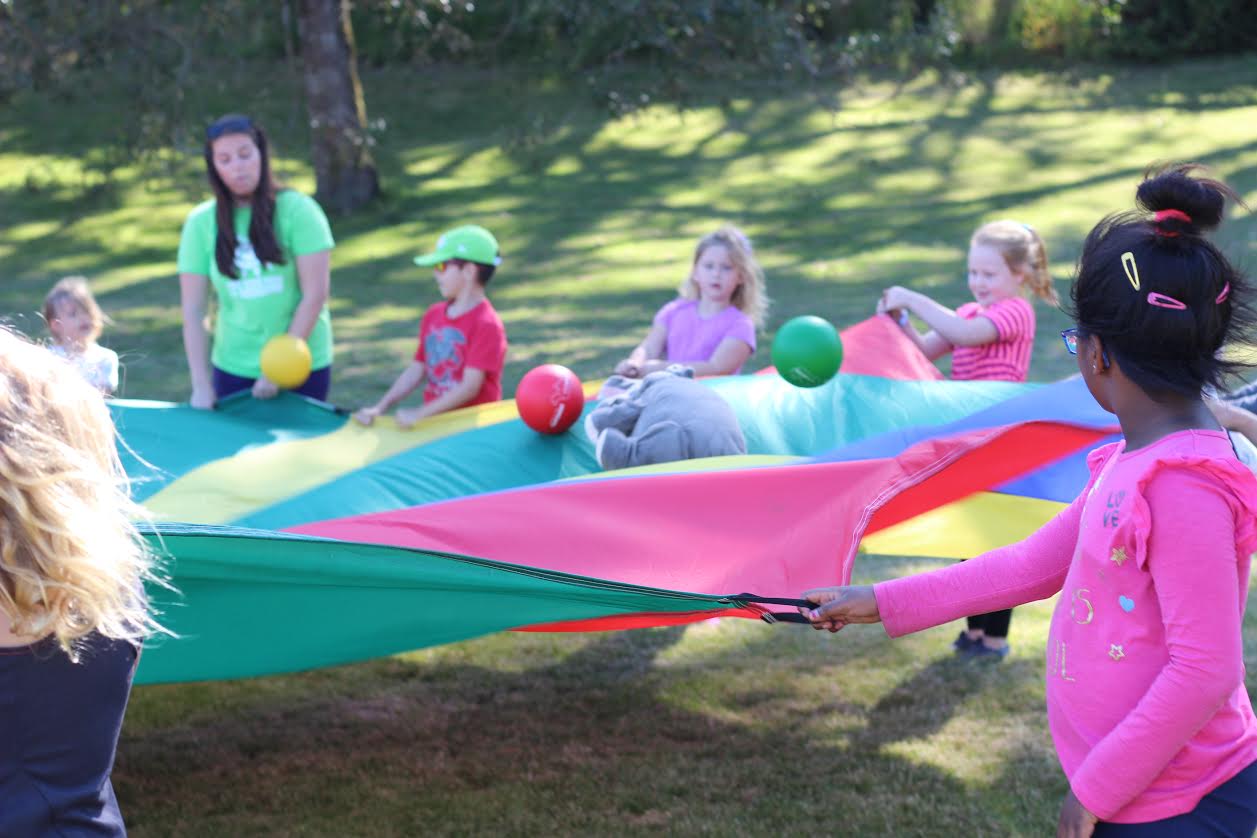What is PL4C?
 For Drew Mitchell, overseeing the Physical Literacy for Communities (PL4C) program feels a little bit like being the conductor of a giant orchestra.
For Drew Mitchell, overseeing the Physical Literacy for Communities (PL4C) program feels a little bit like being the conductor of a giant orchestra.
First, there’s each community that’s working on developing physical literacy: over 25 in B.C., six in Ontario and two in Nunavut. He oversees their working groups, each of them with unique partnerships and perspectives, as they work to create effective relationships across sectors. The work ends up going to unexpected places, but it always centers on creating movement opportunities. That’s what he loves about it.
“We’re trying to think outside the box with who we can engage as a partner. Our program has really provided an opportunity for the engagement of cross-sectoral partners beyond our traditional partners of education, recreation, sport and health,” said Mitchell, who works alongside colleagues Nick Hastie and Tom Jones, as the Senior Director of Social Enterprise and Physical Literacy Development for Sport for Life.
“Now we’re seeing a myriad of additional partners such as social agencies working with newcomers, poverty reduction, city planners, Indigenous engagement. Bringing those people together on a regular basis to build missions and visions around physical literacy is a very important first step in our process.”
Stepping out of the silos
The project is well beyond the first step now.
The first wave of B.C. communities are transitioning out of the project at the end of March 2020, but will continue to stay connected and progress on their own steam. Mitchell was thrilled to see the variety of projects taken on by the communities, and how willing people were to adjust their lifestyle, habits or outlook in favour of movement. One enthusiastic community was PLAY Sooke-Westshore, led by Nicki Brown.
“Our group was formed in a whirlwind, with a few like-minded individuals coming together to apply for the PL4C-BC Initiative grant back in December 2017. With little knowledge of what exactly would be involved in the implementation, the team recruited new members and set about creating a vision, mission and goals,” Brown told Sport for Life.
The working group successfully engaged the recreation sector, the school district and Island Health, among other organizations, then set out to build relationships, make sure everybody was on the same page, then calculate what their capacity was. Their first year got off to a bit of a slow start, but they made up for it the following year.
“The project really took off in Year 2 with all the member organizations committing to educate and train employees on physical literacy. Over 35 health care professionals received a variety of workshop training opportunities, then this knowledge was passed on to hundreds of parents through public health nurses offering screening,” she said.
Next up was recreation staff. Over 100 staff from organizations such as Pacific Institute for Sport Excellence (PISE) and YMCA were trained on how to incorporate physical literacy into their operations. Then they went to the school district, where 48 teachers in 3 schools were also trained, receiving 250 hours of mentorship over the course of 10 weeks.
“Overall the PL4C-BC project has increased awareness of physical literacy in the Sooke and Westshore communities and although there is still a long way to go, organizations are now committed to enhancing awareness and knowledge of physical literacy. By far the greatest success is that all the organizations involved now work on a variety of different projects together, exemplifying the mantra ‘Better Together!’”
Looking at the big picture
When Mitchell looks at the big picture of developing physical literacy in Canada, he knows it’s the PL4C program that’s doing most of the heavy lifting, thanks in part to funding from the Government of British Columbia. By establishing relationships and introducing the concept to people unfamiliar with physical literacy, it’s slowly winning converts. But one hurdle is how seldom people communicate cross-sectorally.
“We’re so siloed. We live in this amazing age of communication yet somehow we’re more siloed than ever. We need to come together with common focus to see the utility of working together, to find out more about each other, and see that we can trust each other. Once you reach a level of trust, that’s a game changer. But nobody talks to each other,” he said.
Because the PL4C program is so multi-faceted, sometimes it’s hard for him to predict what’s going to work and what’s going to fail.
“Even though you’ve set yourself up to be successful and work in a certain way, I’m always surprised at how it plays out. The cool thing is that it does work, you can bring people together to problem-solve and build connectedness and make things better in their community,” he said, pointing to the PLAY West Vancouver – Bowen Island project as an example.
“We had a bunch of sport organizations that came together and over two years they developed field hockey and soccer to reduce conflict and promote multisport. But more importantly, they created a sport alliance that will now have a more coordinated approach around how clubs work, and that’s substantial.”
An upwards trajectory
Since the PL4C program first started, Sport for Life CEO Richard Way has understood the grandiosity of its vision. But even he couldn’t predict how many communities would be successfully engaged — with each working group reaching an average of four communities, he figures they’re reaching well over 100. And each one of them has milestones to reach.
“I’ve had the opportunity to work with PLAY for LIFE Prince George, where we have 125 milestones. When we put all that together this project is a catalyst to literally thousands of actions to develop physical literacy and increase physical activity. This can only be done with hard work and great leadership of Drew Mitchell, Tom Jones, Nick Hastie and our team of mentors along with community leads. They all see the value in connecting within their community to create a better world.”
Plans are already underway to get the PL4C program into new jurisdictions across the country, with five new intakes happening this year. Mitchell was thrilled to learn that four of those are Indigenous communities, which have typically been under-served in the past.
“The key question to ask is what was it like at the beginning, and what’s it like now? And once you look at the work that’s been done, the relationship built and the projects completed, you’ll see there’s a world of difference. People are prioritizing movement in ways we couldn’t even have imagined, and that’s a beautiful thing.”
To learn more about these projects, visit their individual web pages at physicalliteracy.ca. Sooke-Westshore can be found here, Prince George can be found here and West Vancouver – Bowen Island can be found here.

